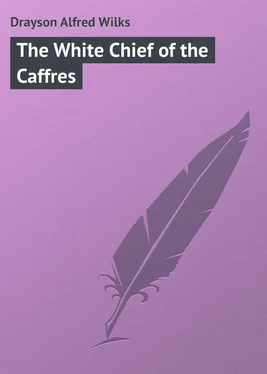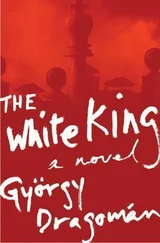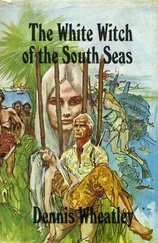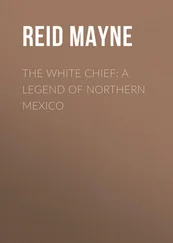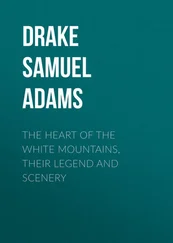Alfred Drayson - The White Chief of the Caffres
Здесь есть возможность читать онлайн «Alfred Drayson - The White Chief of the Caffres» — ознакомительный отрывок электронной книги совершенно бесплатно, а после прочтения отрывка купить полную версию. В некоторых случаях можно слушать аудио, скачать через торрент в формате fb2 и присутствует краткое содержание. Жанр: Прочие приключения, foreign_prose, на английском языке. Описание произведения, (предисловие) а так же отзывы посетителей доступны на портале библиотеки ЛибКат.
- Название:The White Chief of the Caffres
- Автор:
- Жанр:
- Год:неизвестен
- ISBN:нет данных
- Рейтинг книги:4 / 5. Голосов: 1
-
Избранное:Добавить в избранное
- Отзывы:
-
Ваша оценка:
- 80
- 1
- 2
- 3
- 4
- 5
The White Chief of the Caffres: краткое содержание, описание и аннотация
Предлагаем к чтению аннотацию, описание, краткое содержание или предисловие (зависит от того, что написал сам автор книги «The White Chief of the Caffres»). Если вы не нашли необходимую информацию о книге — напишите в комментариях, мы постараемся отыскать её.
The White Chief of the Caffres — читать онлайн ознакомительный отрывок
Ниже представлен текст книги, разбитый по страницам. Система сохранения места последней прочитанной страницы, позволяет с удобством читать онлайн бесплатно книгу «The White Chief of the Caffres», без необходимости каждый раз заново искать на чём Вы остановились. Поставьте закладку, и сможете в любой момент перейти на страницу, на которой закончили чтение.
Интервал:
Закладка:
Note: A Caffre chief who rebelled against us some years ago was called by the English, Langerbelali. The name really was Ilanga-liba-leli, which means, “The Shining Sun.”
During this first day I learnt about forty words in Caffre, and as I afterwards found that about five hundred words enables me to speak in most languages, I was able in a fortnight to understand nearly all that was spoken, and also to make known what I wanted to say.
When the sun was near the horizon, the two Caffre boys collected the cattle, and drove them home. I aided them in this work, and tried to whistle as they did, but this I could not accomplish for some days; the cattle, however, seemed to be more afraid of me than of the Caffres, so I was a great help to them in driving the animals home.
On our reaching the kraal, the cattle were driven into the centre, where there was a circular space fenced round with tall upright poles. The men belonging to the kraal then milked the cows; for this I found was the men’s work, no woman being allowed to milk them. I was taken into a hut where there were two little girls about my own size, who laughed at me, but would not speak. These girls were the sisters of Inyoni and Tembile, and one of them, although black, was very pretty. I was given a bowl of milk and some boiled Indian corn; and being very tired I soon fell asleep, and slept until disturbed shortly before sunrise by the two boys, who made signs to me to go with them and drive the cattle out to their grazing-ground.
During the next day I learned the Caffre for the numbers from one to ten. One they called munye , two was mabili , and ten ishumi . I also learned that some of the fruit in the bush was good and some bad. One fruit that these boys were fond of and was very good, they called Martingula; it grew on a tree something like the English holly and was about the size of a plum. It was red in colour, and varied very much in flavour: we found plenty of these trees, and ate a good deal of the fruit. The boys explained to me that whatever a monkey ate a man might eat, as monkeys knew quite well what was fit and what poisonous for food. Each day I became more apt in speaking Caffre, and as I heard nothing else spoken, I used to think in Caffre, and thought it a very pretty language. My young companions were light-hearted, and very kind, and quite unlike English boys, who too often chaff or bully a strange boy, especially if this boy belongs to a strange nation. But the young Caffres amused themselves for hours each day in throwing an assagy at a mark. The mark was a large hard fruit, in shape and size like an orange. It was placed on the top of a stick, and the boys threw at it from a distance of forty paces. I was very awkward at first, but having learned how to hold and throw the assagy, I became at the end of a week as expert as they were, and being stouter and stronger, I could throw the assagy to a greater distance. I also practised throwing the knob-kerrie, which did not require so much skill, but which I soon found was a very useful weapon, as quails in hundreds soon visited the country, and I and my companions used to knock down twenty or thirty quails a day with these sticks, and we used to make a fire and cook them, and found them excellent eating.
My first great sporting achievement was in killing a duiker, a small antelope that was found in bushy or stony country. This animal, which the Caffres termed Impenze , was very cunning, and could conceal itself in long grass in a wonderful way. I possessed very good sight, and rarely missed seeing anything that was to be seen, though I had yet to learn how to properly use this sight. We were sitting watching the cattle one morning, when I obtained a glimpse of an object moving in some long grass about a hundred yards from where we were. I did not say anything to my companions, but got up, and making a circular course, went quietly up to a rock which overlooked the grass in which I fancied I had seen the moving object. As I peeped over the stone I saw the impenze, standing broadside to, and about twenty yards from me. I had my assagy all ready to throw, and sent it with all my strength at the buck. The blade of the assagy went right through the buck’s neck, and though it did not kill him, it prevented him from moving quickly through the grass and bushes, as it remained fast in his neck. I jumped down quickly and struck him with my knob-kerrie, and killed him with two or three blows on the head. The two Caffre boys had now joined me, as they saw I was attacking some animal. They jumped about in a state of great excitement when they saw the dead antelope; and then taking a good look all round, they told me to keep quiet, and not to tell any one about this buck having been killed. Inyoni at once skinned the buck and laid out the skin on the ground, pegging it down with mimosa thorns. The two boys then procured two sticks about a foot long, and of dry wood; these sticks they selected with great care. Placing one of these on the ground, Inyoni held down the ends with his feet, and then holding the other stick upright, he worked it round and round between the palms of his hands, and pressed it on to the second stick. Tembile relieved Inyoni when the latter was tired, and so they went on, turn and turn about, until the sawdust produced by this friction began to smoke and then to catch fire. A wisp of dry grass was then gathered, the sparks put into this, and the wisp swung round at arm’s-length, when it very soon began to blaze, and in a few minutes we had a capital wood fire. With our assagies we now cut up the buck and fried it over the fire, and had a great feast, eating about half the animal. The remainder we concealed on the branches of a tree, for we knew that if we left it on the ground, a jackal or leopard would find it, and we should get nothing on the following day. I was told by my companions that if the men knew we had killed this buck and had not carried it to the kraal, we should all be beaten; so I must keep the secret, for my own sake as well as theirs.
Our life was very simple and quiet; and I have often thought in later years, that the life led by these Caffres was perfect freedom and luxury, compared with the slavery endured by business men in cities. A Caffre who possessed a hundred head of cattle might have acquired these by his father giving him a cow and a calf when he was a boy. Cattle increase in almost geometrical rates. Thus a cow and a calf would probably become in ten years fifty head of cattle, and the young Caffre would be a man of independent fortune. As soon as a Caffre possesses cattle, he purchases a wife, and the limit to the number of his wives is only drawn by the amount of cattle he possesses. A young good-looking girl is purchased for from eight to ten cows. These are not always paid at once, three or four being given at the time of marriage, and the remainder paid in a year or two afterwards. A wife among these people is not a matter of expense only, as it is with civilised nations; but is a profitable investment, as the wives work in the mealie gardens, do the digging and the sowing, and at the time of harvest gather in the crops. If then a man possess three or four wives, he cultivates a large piece of ground and has plenty of corn, pumpkins, and other grain, and also has cows from which he obtains milk. The men never drank fresh milk, which they call ubisi : this they consider only fit for women and boys. They placed the fresh milk in large gourds made from dried pumpkins, and which contained about two quarts of milk, which was kept for some hours exposed to the sun; the gourd was then shaken, and again allowed to rest; in about three days the milk turned and became lumpy, and had a tart taste about it, and was really meat and drink. When in this state it was called amasi . This amasi and boiled mealies were food enough for the Caffres, meat being eaten only about once a month, when some wedding took place, or a hunting expedition was successful. The Caffre men did very little except milk the cows, which they never allowed the women to do, go out hunting, and have dances, and long talks in their kraals. I should like to know what more pleasant life could be passed by any man in a civilised country than this. Had I been older or more experienced when I was living among these people, I should have been more surprised than I was at the absence of all those wishes, and anxieties, which form the principal desires of men and women in civilised countries. These Caffres had no desire for more than they possessed, except as regards cattle, and thus afforded an excellent example of the proverbs that “He who curtails his wants increases his income,” and “He whose requirements are less than his means of supply, is the only rich man.”
Читать дальшеИнтервал:
Закладка:
Похожие книги на «The White Chief of the Caffres»
Представляем Вашему вниманию похожие книги на «The White Chief of the Caffres» списком для выбора. Мы отобрали схожую по названию и смыслу литературу в надежде предоставить читателям больше вариантов отыскать новые, интересные, ещё непрочитанные произведения.
Обсуждение, отзывы о книге «The White Chief of the Caffres» и просто собственные мнения читателей. Оставьте ваши комментарии, напишите, что Вы думаете о произведении, его смысле или главных героях. Укажите что конкретно понравилось, а что нет, и почему Вы так считаете.
